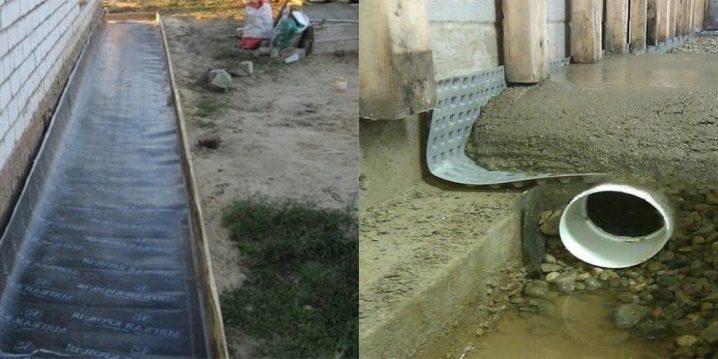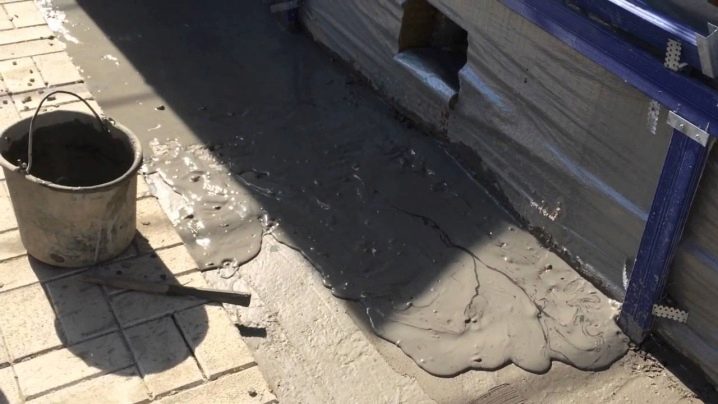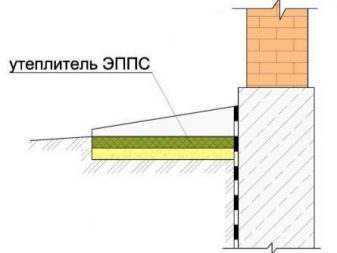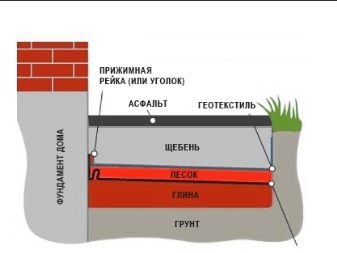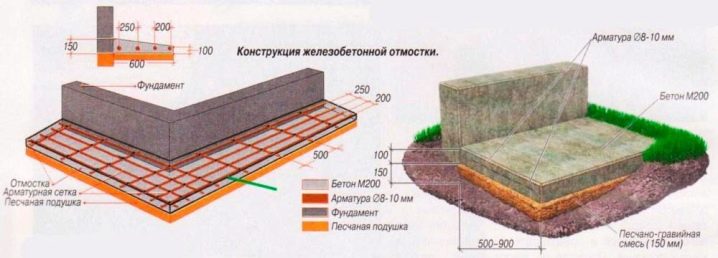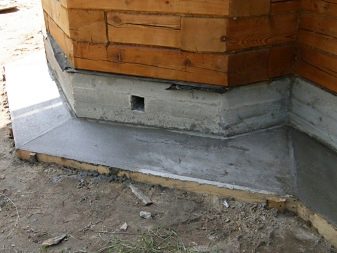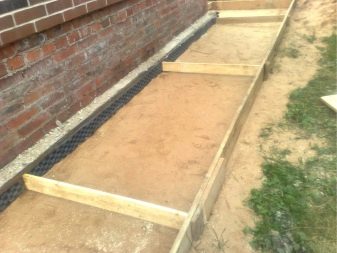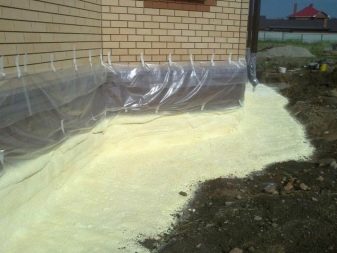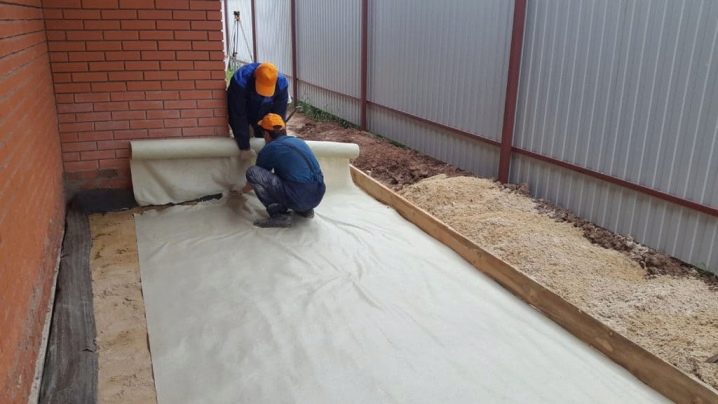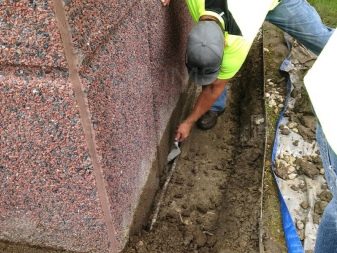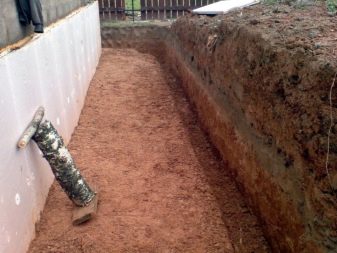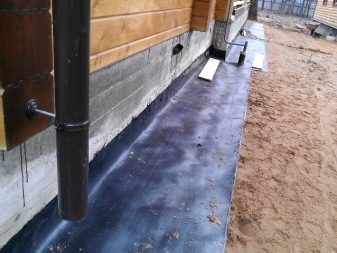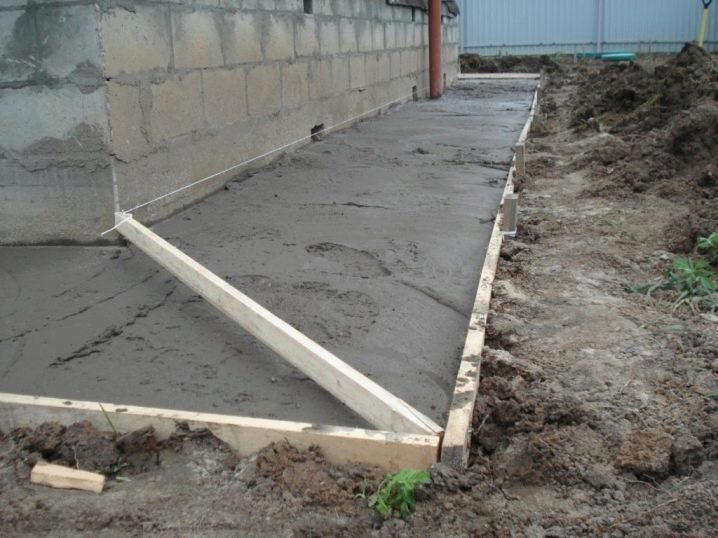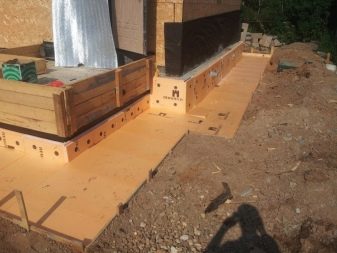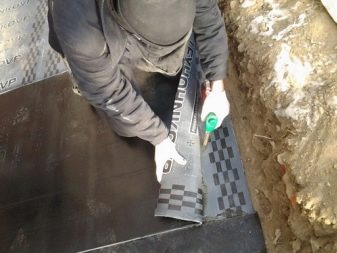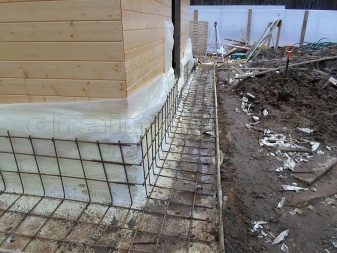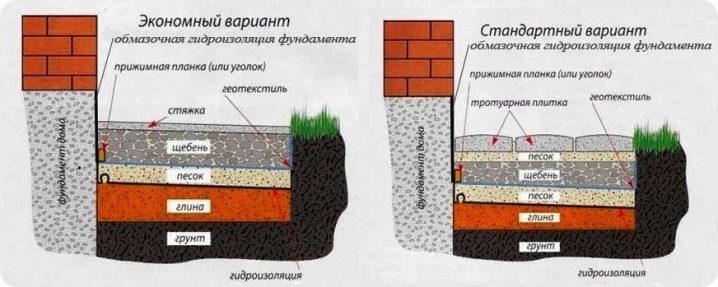How to make waterproofing blind area?
In order to protect the building from unwanted moisture and melting snow, waterproofing of the blind area becomes important. We will understand how to properly perform this type of work.
What it is?
First you need to understand what the "blind area" is. Dictionaries represent this word as an asphalt or concrete strip designed to drain rain and floods from the foundation of a building. In addition, she:
- eliminates excessive moistening of the foundation and the surrounding groundwater that can erode the structure and give excessive shrinkage;
- protects the building from overgrown tree roots near the house.
The blind area is always a strip along the perimeter of the building with a tilt angle from the house.This angle allows the water to slide down, not lingering at the base. The blind area consists of:
- litter layer;
- outer layer.
The type of blind area is determined by the type of material of the outer layer. It can be made of clay and rubble, concrete, asphalt and paving slabs.
The blind area must necessarily have a waterproofing for its own protection against water, as well as in order to prevent wetting of the foundation due to the formation of gaps and gaps. Waterproofing the blind area also allows the basements to be left dry even during heavy rains and in the presence of abundant groundwater.
Dimensions
It is standardly assumed that the blind area must be at least one meter on all sides around the building. Its exact dimensions depend on the width of the roof, on the overhangs of its eaves and on the withdrawal of drains. That is, the width should be 20-30 centimeters more than the removal of the roof.
Materials
The blind area can be:
- bulk of clay, covered with gravel on top;
- from clay and rubble, with an additional waterproofing;
- from concrete (with or without reinforcement), which is poured in place;
- from prefabricated reinforced concrete slabs.
For waterproofing blind areas use different variations of insulation.
Insulation can be: roll, penetrating, you can use mastic, PVC films, membranes.
- Roll (ruberoid, hydroglass-insol) insulation should be used only if the height difference around the foundation is minimal.
- Roll, used for roofs - geotextiles, polypropylene, rubemast.
- Bituminous mastic. Each layer of 2-3 millimeters is applied on each other. It is necessary to prevent bloating and cracks.
- Modern technologies have allowed to invent another type of insulation - penetrating. This substance, whose composition penetrates the pavement material (whether it is asphalt or concrete), and clogs the pores and fills microcracks.
- Hydro cements and asphalt concrete.
Types of waterproofing blind area
There are several types of waterproofing blind area depending on the material.
Clay
This option of waterproofing is considered the most budget and convenient for independent work. It should begin with the removal of the top layer of soil and falling asleep with compacted clay, simultaneously tilting away from the house. Places of contact are coated with bitumen.
For full waterproofing, you can glue a strip of rolled material on a vertical surface, and then fill it with rubble.
Roll
Most often used for buildings equipped with basements. First, the clay is also compacted, then the pieces of the roll overlap the wall. You can put several layers of roll, each promazyvaya mastic. The layers are rolled with a roller, the weight of which should be more than 70 kg. From above fall asleep soil or rubble.
Painting
Performed by applying a primer. It is necessary to wait for its complete drying. On top of the paste is smeared with a layer up to 2 mm, the procedure is repeated 2-3 times.
Concrete
It is necessary to dig a groove, build a formwork there. Pour the area with concrete solution, you can make reinforcement for greater strength. Just as elsewhere, when casting, a slope is formed, and decorative tiles are laid on top.
Warming
Another important point in the implementation of waterproofing blind area - its insulation. Insulation allows you to retain heat in the basement and on the basement, increases the operating time of the blind area, and also allows you to save on materials, as the height becomes less than the depth of soil freezing.
Warming can be done in several ways.
- Expanded polystyrene is quite durable, one might say, an eternal material that possesses additional water-repellent properties. Its weight is so small that its styling is easy. This material is enough for only one layer with a sheet thickness of 10 centimeters. It is only necessary to take care of the protection of the docking places with a special film with a waterproofing effect.
- Polyurethane foam is very cold resistant. He is able to withstand up to -60 degrees without changing their qualities. It is environmentally friendly and has excellent thermal insulation.
- Polyfoam differs in high zvuko-and thermal insulation. This is possible because of its foam structure and the abundance of air inside. The material has a low water absorption, and also has a waterproofing ability and low weight. Foam is resistant to temperatures and mold.
There is no need for warming, if your house is built on stilts or has a huge foundation without basements. In such cases, insulation is a waste of money.
Tips
Correct advice to install the waterproofing of the blind area.
- Do not leave waterproofing "for later." The blind area must be done immediately during the construction of the building.
- Observe the slope.Try to keep the slope around the perimeter the same. For this you can use the building level.
- Do not interfere with concrete and clay.
- In order for the insulation not to deform under the weight of the blind area, it is recommended to choose a material with high density.
- Remember, blind area is not eternal, it requires maintenance and repair.
- When repairing blind areas use a variety of sealants and mastics. The damaged surface is coated to prevent further deformation.
- If there is a large crack or chip on the surface, it is necessary to punch a hole in the form of a wedge and fill it with a mixture of concrete. Then cover with foil to prevent premature drying.
- The outer layer performs not only a decorative function, but also a protective one. Finishing can be done with paving slabs. Of course, no one forbids you to leave the usual concrete or rubble, but, in terms of aesthetics and design, it is better to use the decor.
- Numerous reviews on the Internet say that a membrane or roll materials will be suitable for waterproofing, they are most often used for self-use.
- You can resort to the advice of the Finns and make a soft blind area.
- For special occasions, when the whole garden around the house is a solid designer fiction, you can use colored rubble.
For lovers of gardening, the outer layer can be covered with soil and plant grass or flowers, the main thing that is “inside”.
To learn how to properly waterproof the blind, see the following video.

